I love to think of Alexander the Great kicking off his sandals after a hard day of conquering, pouring himself a shot of one of the many Greek liquors, and sipping it while bleaching his already blonde locks under the Grecian sun. I am quite sure he was joined by his former teacher Aristotle who is apocryphally rumored to be the first to mention distillation in his writings.
Fast forward to recent times, Greek liquors, that were once only really enjoyed by locals, are being embraced by non-Greeks, as well as bartenders, who are busy creating recipes using these newly discovered (to them!) spirits.
After mentioning these spirits on my podcast quite frequently, I thought a quick guide to Greek liquors might be needed, so you know your Tsiouro from your Mastiha.
Ouzo
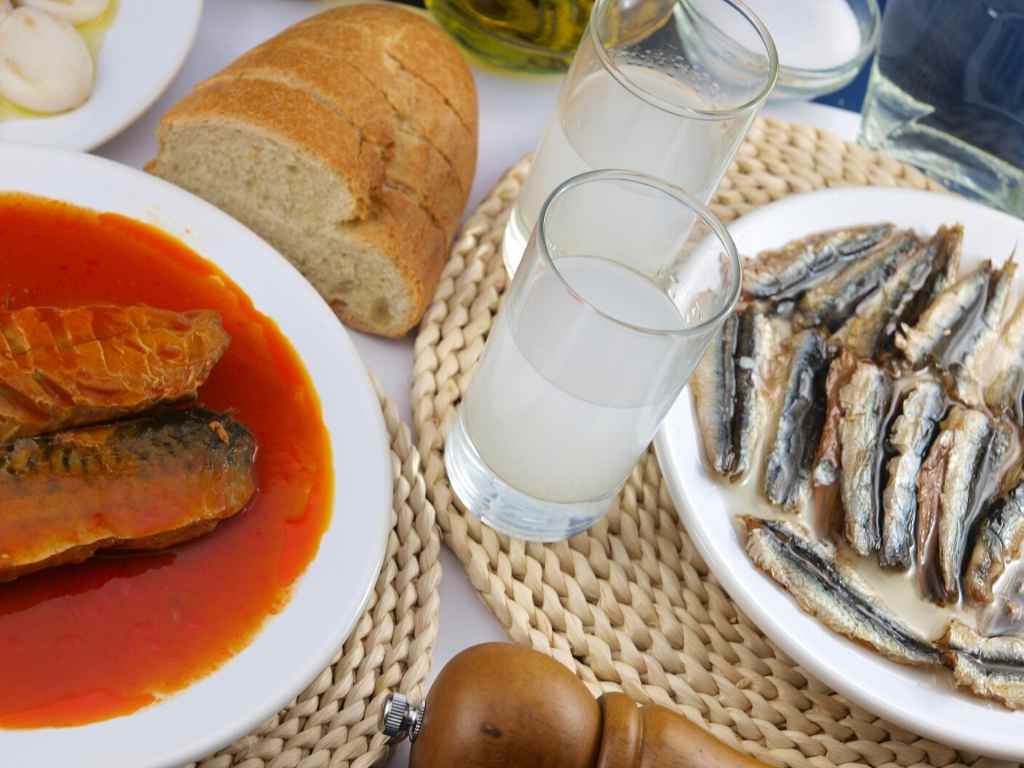
Probably the most well-known of all the Greek liquors outside of Greece is Ouzo, the Greek cousin to France’s Pastis and Italy’s Sambuca, Ouzo is an anise-flavored spirit made from grape must – the leftovers from wine production.
You’ve probably been drinking it, made from one of the 17 ouzo distilleries on the island of Lesbos where it’s production is protected by the government. Remember that adding a touch of water will make it go cloudy.
Mastiha

If you’ve never tasted Mastiha, you have a treat in store for you. It’s really hard to describe the flavor. I like to call it pine, but some have said anything from bubble gum to carrots. Since its discovery on the island of Chios, mastiha, the sap of the Schinias tree, has been used as a cure-all from the ancients to the moderns.
The sap is distilled, diluted with water and sweetened, then bottled. I think there is no better way to end a Greek meal than with a small shot of Mastiha. It is definitely best when the bottle has been left in the freezer for a few days. The liquid becomes syrupy and it’s like eating another dessert. Hear more about Mastiha with George Economides, owner of Mastiha World!
Tsipouro

Somehow in every country, monks were at the forefront of alcohol production. This is definitely true in the case of Tsipouro. According to urban myth, sometime in the 14th C monks were distilling what would become one of the most popular spirits in Greece.
Distilled from the remains of grapes after wine production, tsipouro is either enjoyed as it is or infused with other flavors, most frequently anise. Also served well chilled and in small glasses, tsipouro is always the one drink you will be offered first when being welcomed into a Greek home.
Metaxa

You’ve probably seen this iconic bottle and not known what it is! The most well known Greek brandy, Metaxa, is a combination of Muscat grapes, found on the island of Samos, and a secret blend of botanicals.
Aged for three years, the liquid develops a warm, yellow color and the taste of all those delicious dried fruits you find in that part of the world – like figs and dates.
Rakomelo
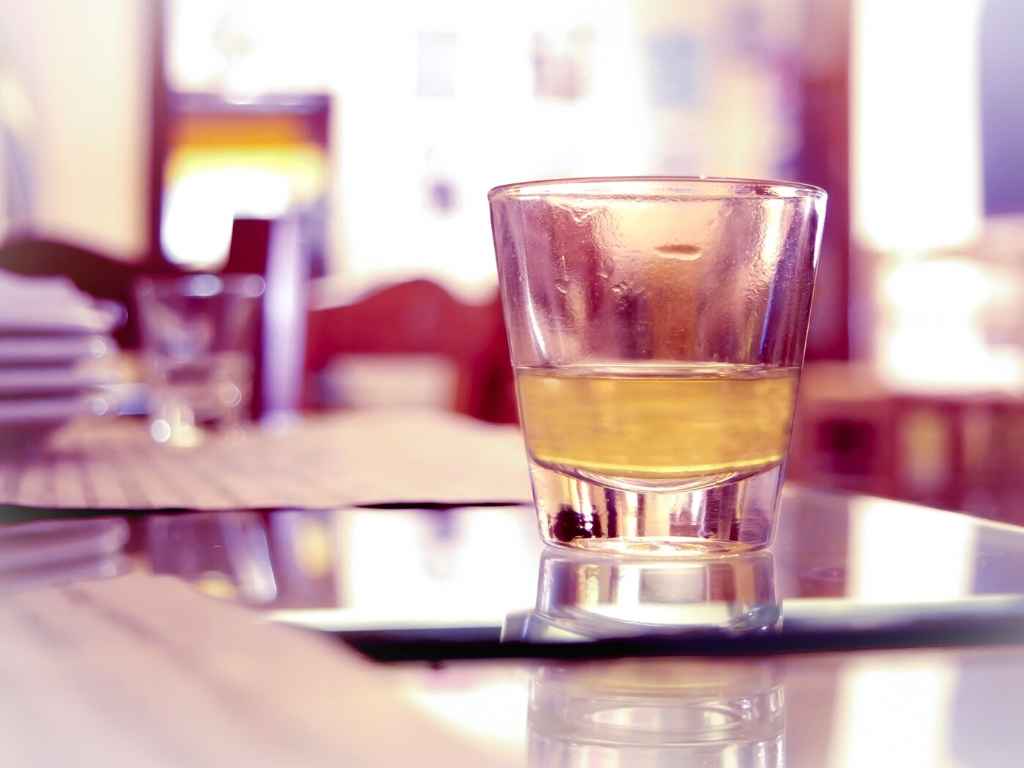
Crete is where you would find this wonderfully spicy spirit. Sometimes served warm, Rakomelo is like a cold remedy in a glass. Flavored with honey, cinnamon, clove and cardamom, this soothing wintery liquor claims to have been invented in the 12th Century. We won’t argue because every Greek mama has been using it to cure sniffles since that time.
Koukouzina
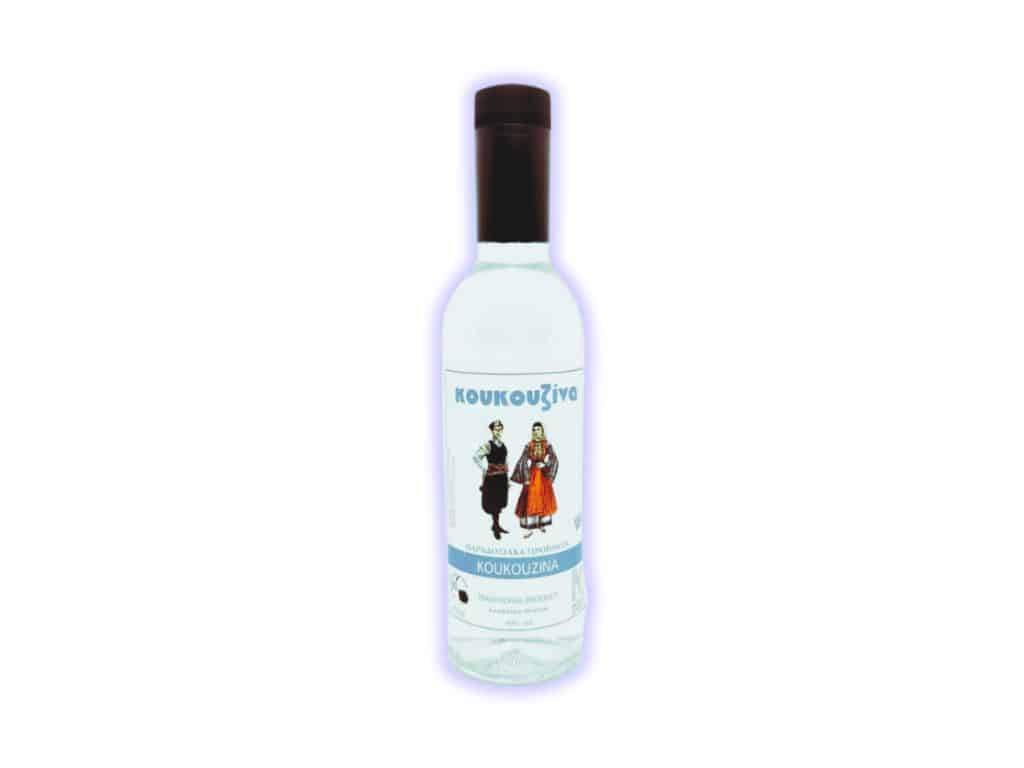
Koukouzina is a rare and traditional Greek spirit found primarily in Crete and the Dodecanese islands. It is made through the distillation of fermented grape pomace, much like tsipouro or raki, but with subtle variations in production that give it a distinct character. The name itself is derived from the Greek word for the stills used in the distillation process, which are often handcrafted and passed down through generations.
Historically, koukouzina has been a homemade specialty, produced in small batches by local families and enjoyed at village gatherings and celebrations. The flavor varies depending on the grape varieties used and whether the spirit is infused with herbs or spices. Some versions are completely unadulterated, offering a raw and fiery kick, while others are smoother and more refined.
Tentura

This spiced liqueur from Patras is made with cinnamon, cloves, nutmeg, and citrus peels. Its warm and aromatic profile makes it an excellent digestif, and it’s often enjoyed neat or mixed with coffee.
Tentura has been produced in Patras since the 15th century and is deeply connected to the city’s history. Traditionally served after meals, it is known for its ability to aid digestion and warm the body during the colder months. Some modern Greek bartenders have started incorporating tentura into cocktails, using its complex spice notes to add depth to both classic and contemporary drinks.
Kitron
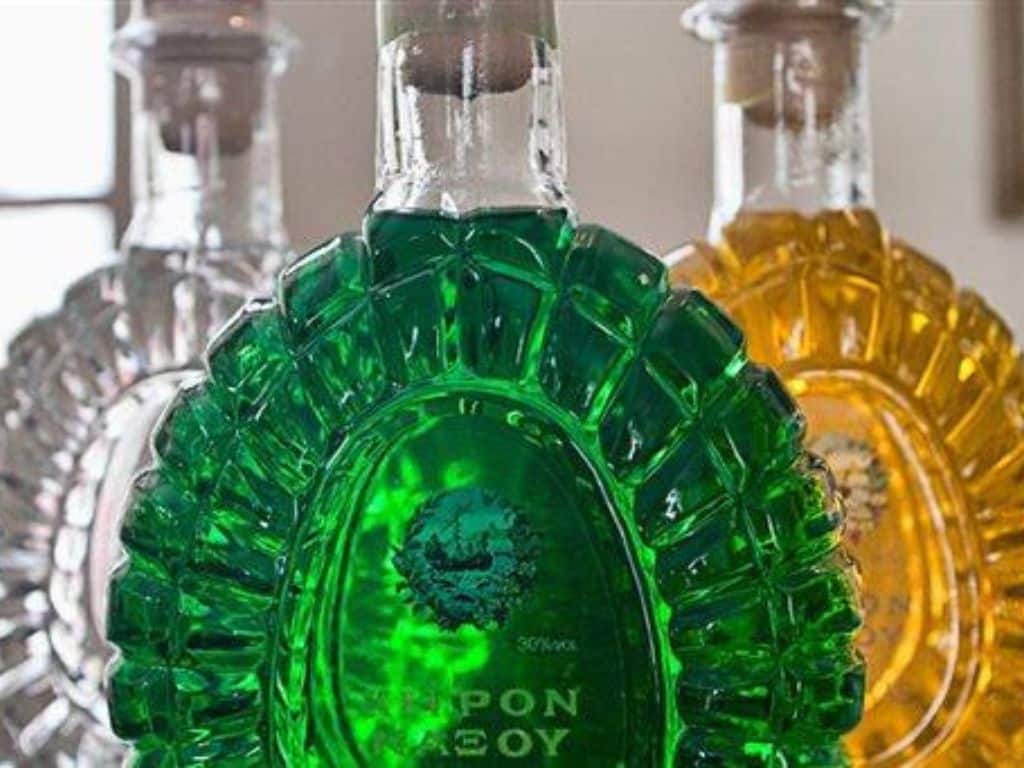
Produced exclusively on the island of Naxos, Kitron is a citrus liqueur made from the leaves and fruit of the citron tree. It comes in three varieties—yellow (sweet), green (dry), and clear (medium)—and is a refreshing alternative to limoncello.
The production of Kitron dates back to the 19th century, and the spirit remains a point of pride for Naxos. The leaves of the citron tree, which are rarer than lemons or oranges, impart a distinctively herbal and floral aroma. Though commonly enjoyed neat as a digestif, Kitron also works beautifully in cocktails, adding a zesty brightness to mixed drinks.
Koum Quat Liqueur

A specialty of Corfu, this vibrant orange liqueur is made from locally grown kumquats. It has a sweet and slightly tart flavor, making it a delightful after-dinner drink or a fun addition to cocktails.
Introduced to Corfu by the British in the 19th century, kumquats thrived in the island’s mild climate, leading to the development of this unique liqueur. Traditionally produced by soaking kumquats in alcohol and then sweetening the infusion, the liqueur is available in both bright orange and clear varieties. It’s often served over ice or drizzled over desserts like panna cotta and ice cream.
Souma
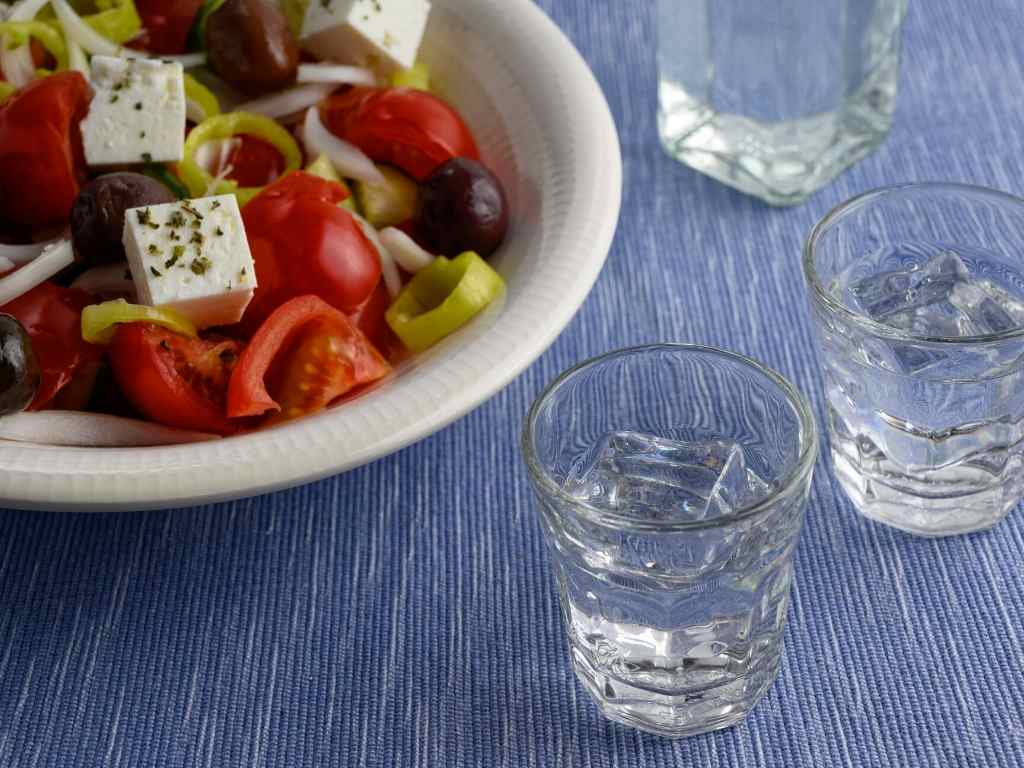
A lesser-known Greek spirit, souma is similar to tsipouro but primarily produced on the islands, especially Rhodes and Chios. It’s made from figs or grapes and has a strong, earthy character.
Unlike tsipouro, which is more widespread, souma is often homemade and enjoyed during local festivals and gatherings. The version from Rhodes is typically grape-based, while the version from Chios is made from figs, giving it a subtly sweet and smoky undertone. Locals drink it neat or slightly chilled, often accompanied by small meze plates featuring olives, seafood, and cheeses.
I am sure there are many more spirits that are being served across Greece that we outsiders have yet to discover, but at least, knowing these will give you a headstart on your next holiday to the islands.
Tsikoudia
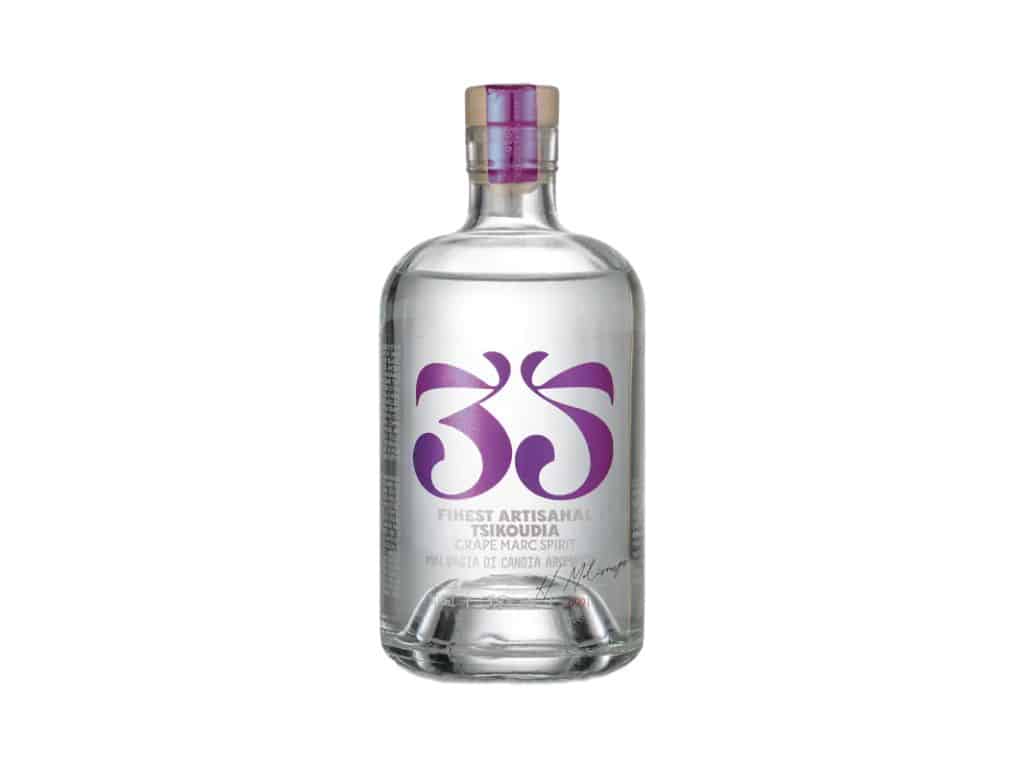
Hailing from Crete, tsikoudia—also known as raki—is a potent, clear grape-based spirit with no added flavoring. Traditionally served as a digestif, it’s often accompanied by small plates of olives, cheese, or nuts. The spirit is often homemade, with families passing down distillation techniques through generations. During the autumn months, many Cretan villages host kazani festivals, where fresh raki is distilled in large copper stills,.
Unlike ouzo, which has a strong anise flavor, tsikoudia has a pure, unadulterated taste of grapes and a warming finish. While it packs a punch, its clean and natural profile makes it surprisingly easy to sip, especially when paired with traditional Cretan meze like grilled meats, dakos (rusk with tomato and feta), or local cheeses.
Now Try Greek Cocktails from Mextaxa
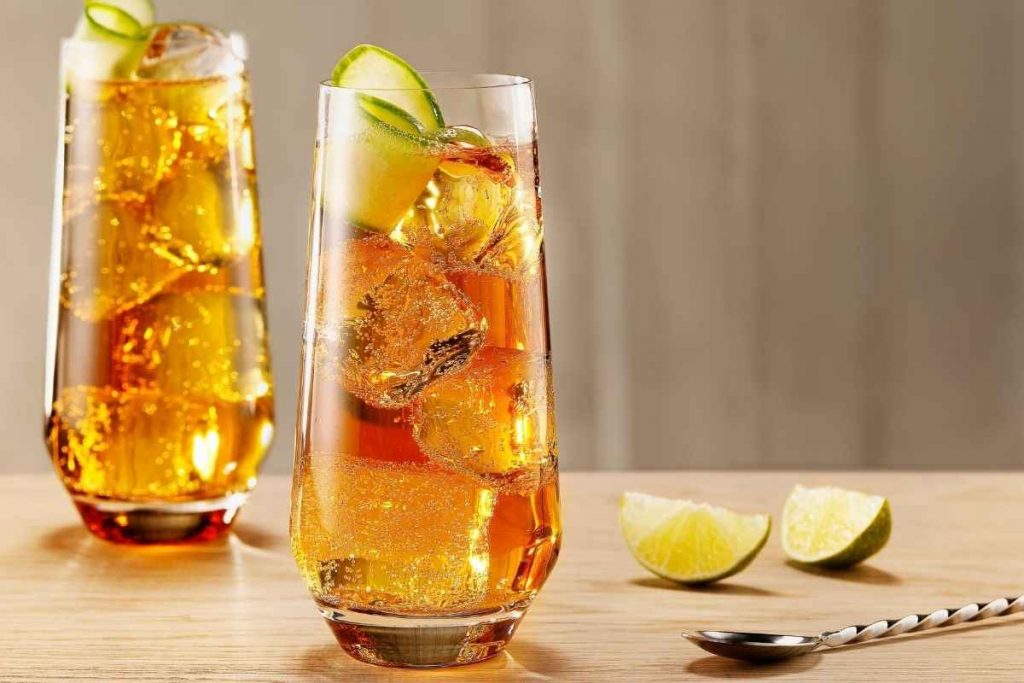
Metaxa is the famed Greek Brandy. Every household has a bottle and it’s brought out for holidays and celebrations, and now it’s found in cocktail more and more. Metaxa 12 Star is the highest of all the Metaxa stars range. One sip and you know why!

